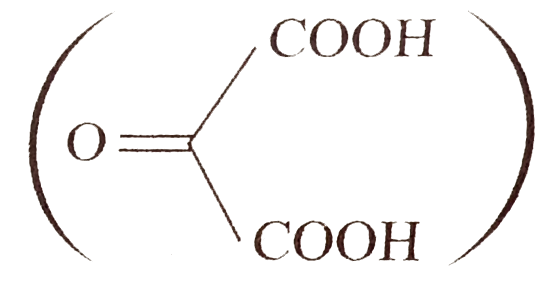On heating compound (A) gives a gas (B) which is a constituent of air.
This gas when treted with 3 moles of hydrogen in the presence of a catalyat gives another gas (C ) which is basic in nature. Gas C on further oxidation in moist condition gives a compound (D) which is a part of acid rain. Identify compounds (A) to (D) and also give necessary equations of all the steps involved .
To solve the problem step by step, we will identify the compounds (A) to (D) based on the given reactions and conditions.
Step 1: Identify Compound A
The question states that on heating compound (A), a gas (B) is produced which is a constituent of air. A common compound that fits this description is ammonium nitrite (NH₄NO₂).
Equation:
NH4NO2heat−−→N2+2H2O
Step 2: Identify Gas B
From the reaction above, when ammonium nitrite is heated, it produces nitrogen gas (N₂) and water. Nitrogen gas (N₂) is indeed a major constituent of air.
Gas B:
B=N2
Step 3: Reaction of Gas B with Hydrogen
The nitrogen gas (B) reacts with hydrogen (H₂) in the presence of a catalyst to form another gas (C). According to the Haber process, nitrogen reacts with hydrogen to form ammonia (NH₃).
Equation:
N2+3H2catalyst−−−−→2NH3
Step 4: Identify Gas C
From the above reaction, the gas (C) produced is ammonia (NH₃), which is basic in nature.
Gas C:
C=NH3
Step 5: Oxidation of Gas C
The ammonia (C) undergoes oxidation in moist conditions to form nitrogen oxides (NO or NO₂). For simplicity, we can consider the formation of nitrogen monoxide (NO) first.
Equation:
4NH3+5O2→4NO+6H2O
Step 6: Identify Compound D
The nitrogen monoxide (NO) can further react with oxygen to form nitrogen dioxide (NO₂), which can then react with water to form nitric acid (HNO₃), a component of acid rain.
Equations:
1. Formation of NO₂:
2NO+O2→2NO2
2. Formation of HNO₃:
3NO2+H2O→2HNO3+NO
Compound D:
D=HNO3
Summary of Compounds
- Compound A: Ammonium nitrite (NH₄NO₂)
- Gas B: Nitrogen gas (N₂)
- Gas C: Ammonia (NH₃)
- Compound D: Nitric acid (HNO₃)
Final Equations Summary
1. NH4NO2heat−−→N2+2H2O
2. N2+3H2catalyst−−−−→2NH3
3. 4NH3+5O2→4NO+6H2O
4. 2NO+O2→2NO2
5. 3NO2+H2O→2HNO3+NO
The question states that on heating compound (A), a gas (B) is produced which is a constituent of air. A common compound that fits this description is ammonium nitrite (NH₄NO₂).
NH4NO2heat−−→N2+2H2O
From the reaction above, when ammonium nitrite is heated, it produces nitrogen gas (N₂) and water. Nitrogen gas (N₂) is indeed a major constituent of air.
B=N2
The nitrogen gas (B) reacts with hydrogen (H₂) in the presence of a catalyst to form another gas (C). According to the Haber process, nitrogen reacts with hydrogen to form ammonia (NH₃).
N2+3H2catalyst−−−−→2NH3
From the above reaction, the gas (C) produced is ammonia (NH₃), which is basic in nature.
C=NH3
The ammonia (C) undergoes oxidation in moist conditions to form nitrogen oxides (NO or NO₂). For simplicity, we can consider the formation of nitrogen monoxide (NO) first.
4NH3+5O2→4NO+6H2O
The nitrogen monoxide (NO) can further react with oxygen to form nitrogen dioxide (NO₂), which can then react with water to form nitric acid (HNO₃), a component of acid rain.
1. Formation of NO₂:
2NO+O2→2NO2
2. Formation of HNO₃:
3NO2+H2O→2HNO3+NO
D=HNO3
- Compound A: Ammonium nitrite (NH₄NO₂)
- Gas B: Nitrogen gas (N₂)
- Gas C: Ammonia (NH₃)
- Compound D: Nitric acid (HNO₃)
1. NH4NO2heat−−→N2+2H2O
2. N2+3H2catalyst−−−−→2NH3
3. 4NH3+5O2→4NO+6H2O
4. 2NO+O2→2NO2
5. 3NO2+H2O→2HNO3+NO
Topper's Solved these Questions
- BOOK - NCERT EXEMPLAR ENGLISHCHAPTER - P-BLOCK ELEMENTSEXERCISE - Assertion and Reason6videos
P-BLOCK ELEMENTS
- BOOK - NCERT EXEMPLAR ENGLISHCHAPTER - HALOALKANES AND HALOARENESEXERCISE - Long Answer Type Questions3videos
HALOALKANES AND HALOARENES
- BOOK - NCERT EXEMPLAR ENGLISHCHAPTER - POLYMEREXERCISE - Long Answer Type Question5videos
POLYMER
Similar Questions
On heating compound (A) gives a gas (B) which is a constituent of air . This gas when treated H2 in the presence of a catalyst gives another gas (C) which is basic in nature. (A) should not be :
View SolutionA non-metal A which is the largest constituent of air, when heated with H2 in 1 : 3 ratio in the presence of catalyst (Fe) gives a gas B. 0n heating with O2 it gives an oxide C. If this oxide is passed into water in the presence of air, it gives an acid D which acts as a strong oxidising agent.
(a) Identify A, B, C and D.
(b) To which group of the periodic table does this non-metal belongs?View SolutionCompound (A)(C12H16) on oxidation with acidic KMnO4 solution gives acetone and
 . Identify compound (A). View Solution
. Identify compound (A). View SolutionA black mineral (A) on heating in presence of air gives a gas (B). The mineral (A) on reaction with dilute H2SO4 gives a gas (C) and a solution of a compound (D) on passing the gas (C) into an aqueous solution of (B), a white turbidity is obtained. The aqueous solution of (D) on reaction with potassium ferricyanide gives a blue compound (E). Identify (A) to (E) and give chemical equations for the reaction involved.
View SolutionCompound (A)(C8H12) on oxidation gives an acid B(C4H6O2). One mole of compound (A) reacts with 3mol of H2 in the presence of Pt catalyst to give octane. Identify compound (A).
View SolutionThe compound (A) in the previous question is further hydrolysed in dilute acidic medium to give compounds (B) and (C). The compounds (B) and (C) are :
View SolutionA compound (A) of boron react with NMe3 to give an adduct (B) which in hydrolysis gives a compound (C) and hydrogen gas. Compound (C) is an acid. Indenfity the compounds A,B and C. Give the reactions involved.
View SolutionWhich of the following compound gives paramagnetic gas on heating :-
View SolutionWhich of the following compound gives paramagnetic gas on heating :-
View SolutionAssertion: The properties of paramagnetic and ferromagnetic substances are not affected by heating.
Reason: As tmeperature rises, the alignment of molecular magnets gradually decreases.View Solution

